Popular US park as radioactive as Chernobyl, expert says: ‘I’ve never seen anything like it’
A beautiful walking trail has been discovered to be dangerously contaminated with radiation.
New tests have found that Acid Canyon, a popular hiking and biking trail near the birthplace of the atomic bomb, Los Alamos, New Mexico, is still radioactive, comparable to the radiation at the site of the Chernobyl nuclear disaster in the Soviet Union.
The shocking pollution data, collected under the leadership of biochemist Michael Ketterer, has led to calls from the public for official warnings to be placed along the trail.
“I’ve never seen anything like this in the United States,” Ketterer, a professor emeritus at Northern Arizona University, told reporters. “This is a no-holds-barred area.”
Above is a rural winter photo overlooking Los Alamos, New Mexico at left and center, the Omega Bridge at center, and the Los Alamos National Laboratories at right
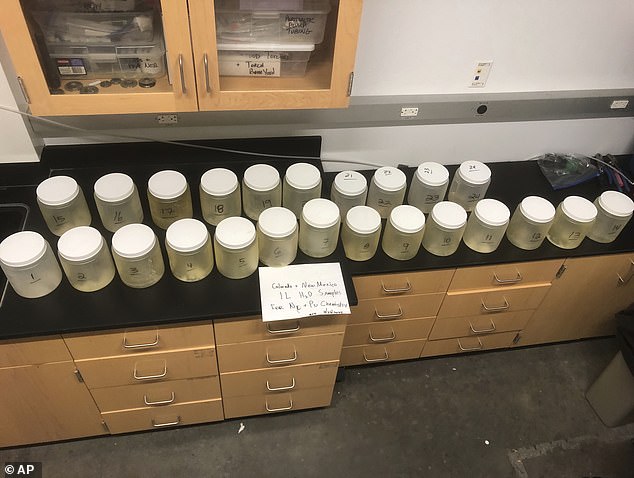
This July 22, 2024, image provided by biochemist Michael Ketterer shows jars containing water samples from Acid Canyon in Los Alamos, New Mexico
“It’s just an extreme example of very high concentrations of plutonium in soils and sediments,” the biochemist noted. “It’s hidden in plain sight.”
In response to the alarming new recordings of this ‘superweapon grade plutonium‘, the U.S. Department of Energy (DOE) released a statement saying the levels were “very low and well within the safe exposure range.”
While outdoor enthusiasts are not in immediate danger when traveling through Acid Canyon’s pine-lined trail, Ketterer stressed that New Mexico state and local authorities must warn visitors to avoid contact with water in the area.
According to his measurements, the contamination exceeded the safety threshold of the US Environmental Protection Agency (USEPA) by more than 72 percent.
Water samples along the trail contained radioactive levels as high as 86 picocuries per liter (pCi/L), compared to USEPA accepted levels of less than 50 pCi/L.
“All four water samples exceed the federal Environmental Protection Agency’s applicable gross alpha standard,” Ketterer said, “and highlight a serious water contamination problem requiring immediate USEPA and/or state intervention.”
The biochemist also noted that the high concentrations of plutonium in the gorge’s water posed a greater environmental risk to communities and habitats downstream.
“Under monsoon storms, water and sediment containing Pu (plutonium) flow through Acid Canyon and into Los Alamos Canyon and ultimately into the Rio Grande,” he said. noted in his presentation for the group New Mexico Nuclear Alert.
“This is one of the most shocking things I have ever encountered in my life,” the biochemist said the guard of his discovery.
Radioactive plutonium in groundwater can also be taken up by plants, entering the food chain via local herbivores that eat vegetables, Ketterer said. It can also spread as ash into the air after increasingly frequent wildfires.
Ketterer worked with Nuclear Watch New Mexico, a 501(c)3 nonprofit, to collect samples last July, a rainy season that often sees isolated downpours and rainwater flowing through canyons and otherwise dry arroyos.
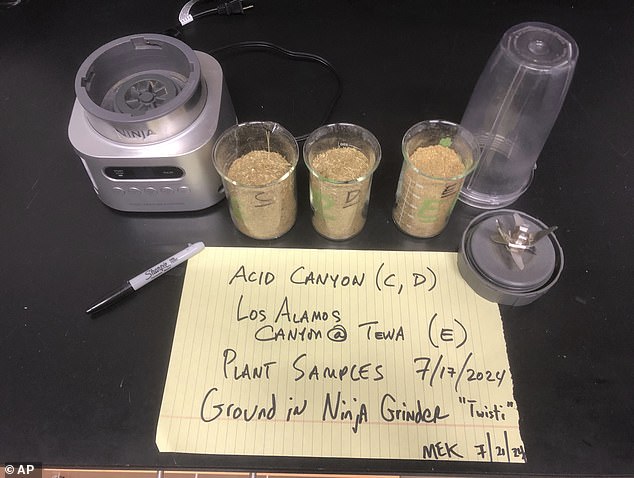
This July 21, 2024, photo shows the vegetation of Acid Canyon and lower Los Alamos Canyon near Los Alamos, NM, after being milled as part of a radiation testing and sampling project
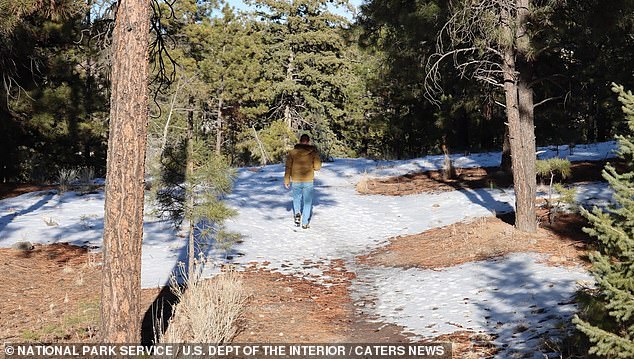
Above is a glimpse of the Acid Canyon trail, provided by the US National Park Service
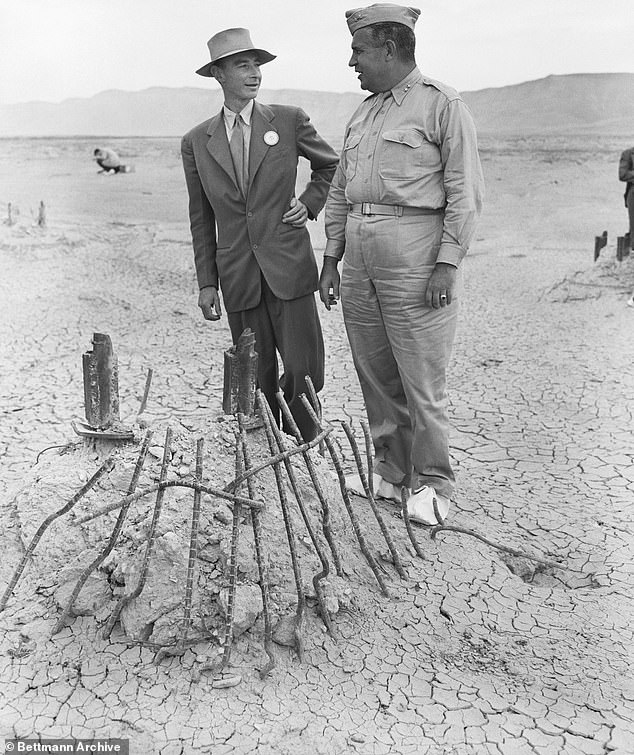
Major General Leslie Groves (right), head of the Manhattan Engineering District where the first atomic bomb was developed, and Dr. J.R. Oppenheimer, director of a top-secret project, discuss the secret program that led to the plutonium contamination that remains at the site today.
The water their team ultimately tested was flowing through Acid Canyon when the samples were taken.
The work followed mapped by the group Earlier this year, that was based on a database from Los Alamos National Laboratory of plutonium samples from across the region.
According to Jay Coghlan, director of Nuclear Watch, the plutonium contamination at the heart of Los Alamos is not just a historical concern.
Laboratories at the site – under the direction of Congress, the Department of Energy and the National Nuclear Security Administration – are currently preparing producing on the next generation of plutonium pits to modernize the US nuclear arsenal.
“The cleanup at Los Alamos has been delayed for a long time,” Coghlan said.
He noted that annual spending on the new plutonium mine has risen to nearly $2 billion in recent years, while the relatively limited budget for cleaning up old Los Alamos waste is expected to decline in the next budget year.
The DOE’s Environmental Management Los Alamos Field Office issued a statement to the Associated Press this month, hoping to downplay the severity of the new findings.
The DOE said the information Ketterer and Nuclear Watch presented matches data the department has had publicly available for years.
The trails in the gorge are still safe and open to public use, they say.
That local field office, DOE said, “continues to collect and monitor sediment and water samples in the Acid Canyon area and results consistently show that plutonium levels remain very low and well within safe exposure limits.”
Ketterer, who has long specialized in detecting the chemical fingerprints of radioactive materials, described the problem as not only serious but also a contamination problem that cannot be solved easily or cheaply.
He indicated that local residents and visitors would at least appreciate being made aware of the facts and their own risk.
“This requires immediate notice and action by state and local authorities to warn people and their pets not to come into contact with the water in Acid Canyon,” he said.
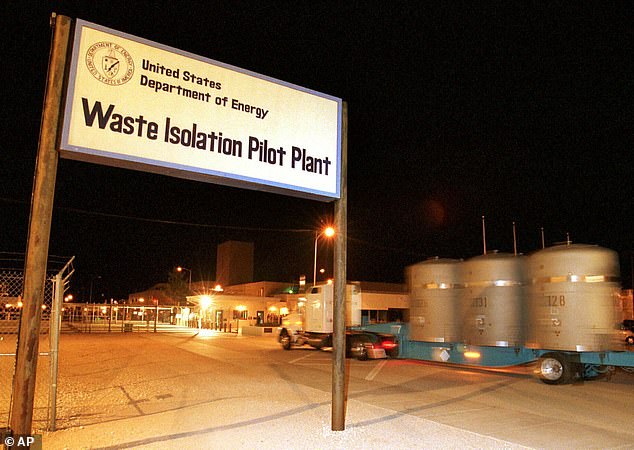
In this March 1999 photo, the first shipment of nuclear waste arrives at the Waste Isolation Pilot Plant in Carlsbad, New Mexico, from Los Alamos National Laboratory
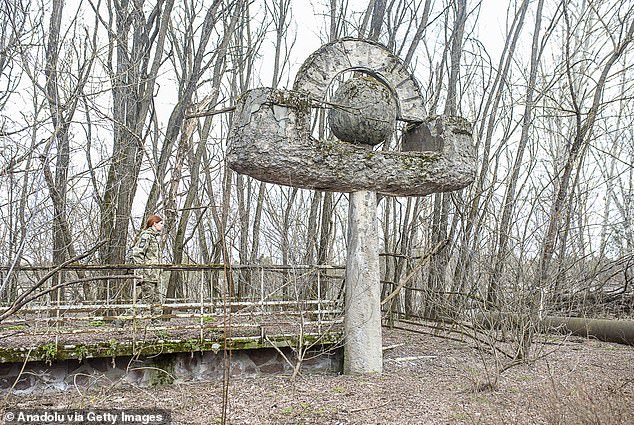
New tests have found that Acid Canyon, a popular hiking trail near the birthplace of the atomic bomb in Los Alamos, New Mexico, is still radioactive at levels comparable to those seen in the Soviet Union’s Chernobyl nuclear disaster. (Above: Abandoned signs near Chernobyl)
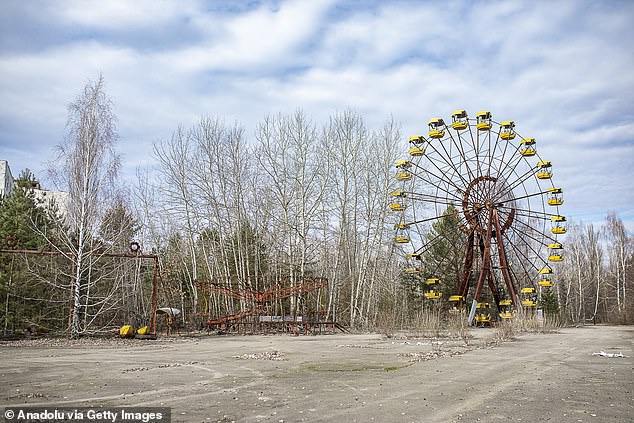
Above is a March 17, 2024 photo of the abandoned city of Pripyat, home to thousands of people who once worked at the infamous nuclear power plant near Chernobyl, Ukraine
From 1943 to 1964, liquid waste from nuclear research at Los Alamos National Lab was transported through pipelines to Acid Canyon, one of the tributaries that flows through the San Ildefonso Pueblo area on its way to the Rio Grande.
Although the federal government began clearing the canyon in the late 1960s, the land was eventually transferred to Los Alamos County.
Government officials determined in the 1980s that conditions in the area met DOE standards and provided protection for human health and the environment.
The DOE’s Office of Environmental Management pointed reporters to a 2018 DOE study that estimated the radiation dose to someone recreating in the canyon is less than 0.1 millirems (mrems) per year.
According to the U.S. Nuclear Regulatory Commission, the average annual dose per person from all natural and man-made sources is about 620 mrem.
A total of 223 user reviews about the popular hiking app AllTrails currently gives the Acid Canyon trail a rating of 4.3 out of 5.
“Great trail,” reported one cyclist last April. “The trail is in good condition, no problems.”
“There are no markings on the trail!” wrote one of the many hikers who found that there was not even basic signage at the location. “I could not have stayed on this trail without checking my map every now and then.”
“Otherwise,” they said, “it was a good walk with beautiful views!”
